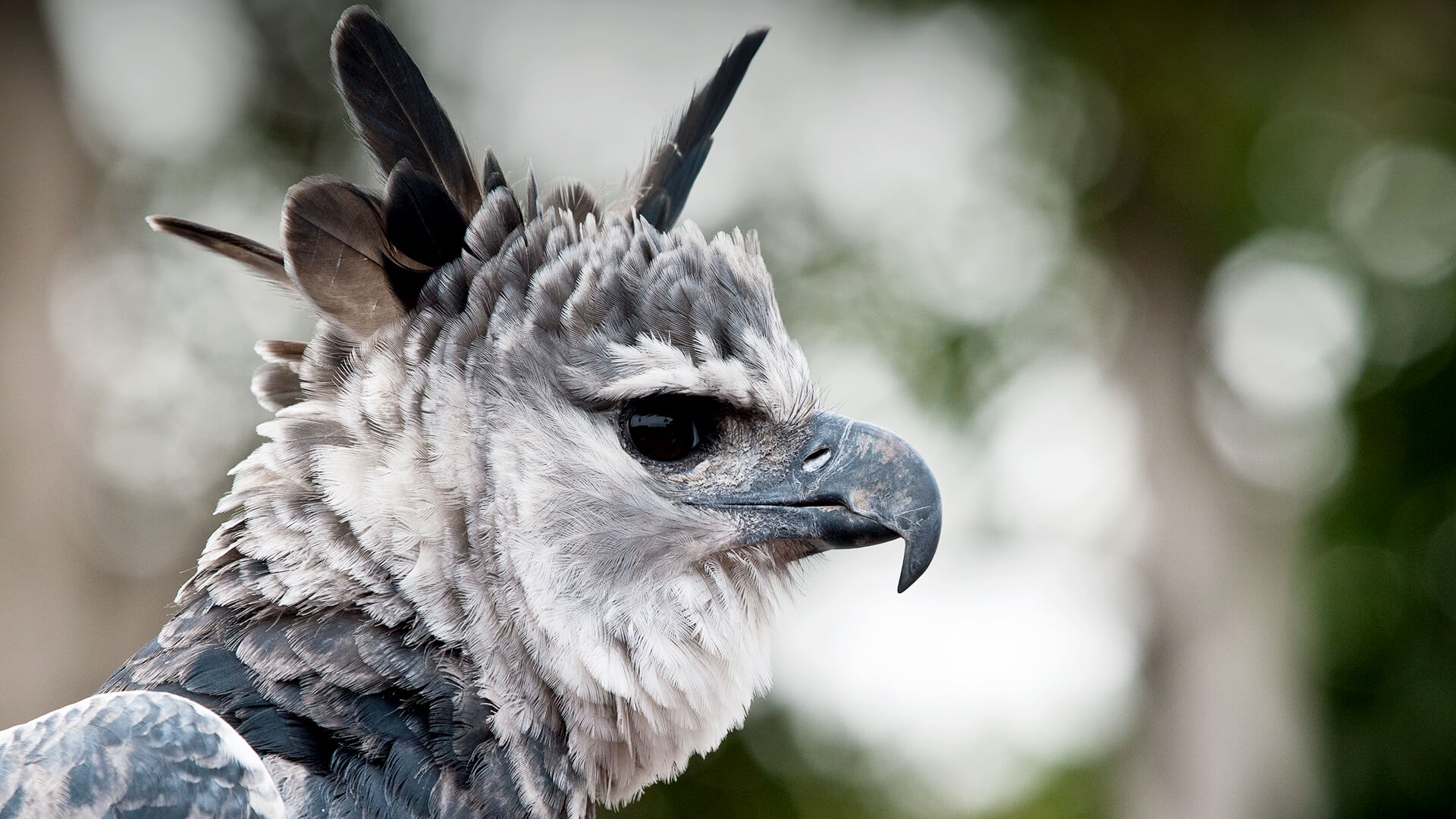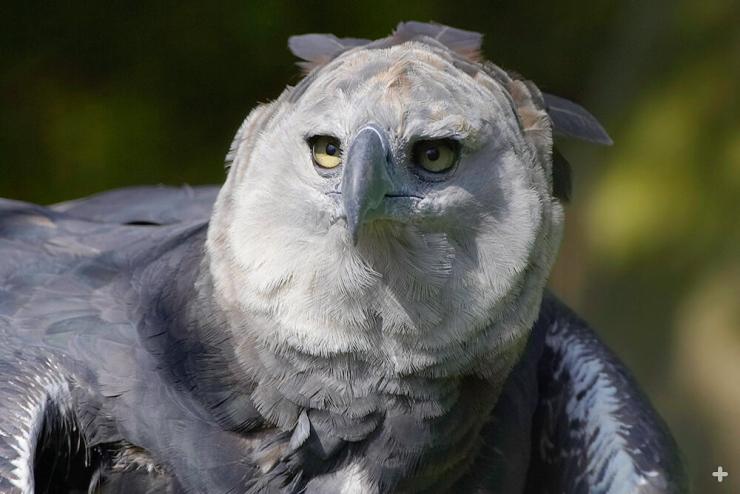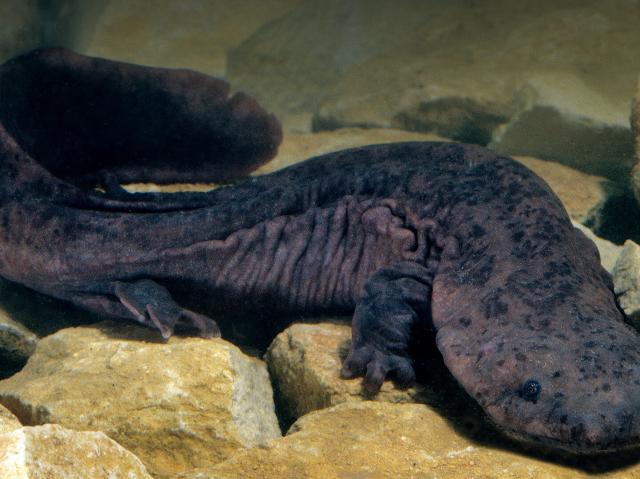
Harpy Eagle

- CLASS: Aves (Birds)
- ORDER: Falconiformes
- FAMILY: Accipitridae
- GENUS: Harpia
- SPECIES: harpyja

ABOUT
Bold and beautiful: The harpy eagle is legendary, although few people have seen one in their native habitat. These great birds are named after harpies, the predatory “frightful, flying creatures with hooked beak and claws” of Greek mythology. This dark gray bird of prey has a very distinctive look, with feathers atop its head that fan into a bold crest when the bird feels threatened. Some smaller gray feathers create a facial disk that may focus sound waves to improve the bird’s hearing, similar to owls.
Like most eagles, the female “harpy” is almost twice as large as the male. The harpy eagle's legs can be as thick as a small child's wrist, and its curved, back talons are larger than grizzly bear claws at 5 inches (13 centimeters) long! The harpy may not be the largest bird of prey (that title belongs to the Andean condor), but this extraordinary creature is definitely the heaviest and most powerful of birds.
HABITAT AND DIET
Harpy eagles range from Mexico to northern Argentina and live in forested areas. Despite their wingspan, which can reach up to 6.5 feet (2 meters) across, harpies fly through their forest home with great agility. For nesting, harpies favor silk-cotton trees (kapok trees) and usually build nests 90 to 140 feet (27 to 43 meters) above the ground. They like to use trees with widely spaced branches for a clear flight path to and from the nest. Harpies use large sticks to create the nest's huge frame and line it with softer greens, seedpods, and animal fur to make it warm and comfortable. A harpy nest measures about 4 feet (1.2 meters) thick and 5 feet (1.5 meters) across, large enough for a person to lie across! Once built, an eagle pair may reuse and remodel the same nest for many years.
The strong, silent type, harpy eagles do not vocalize much. When heard, they wail (wheee, wheee-ooooo), croak, whistle, click, and mew.
Harpies are great at saving precious energy. You will never see a harpy eagle soaring over the top of a rainforest. Instead, the powerful harpy flies below the forest canopy and uses its great talons to snatch up monkeys and sloths that can weigh up to 17 pounds (7.7 kilograms)! A harpy is capable, in a serious chase, of reaching speeds of 50 miles per hour (80 kilometers per hour). It dives down onto its prey and snatches it with outstretched feet.
Its short, broad wings help the harpy fly almost straight up, too, so it can attack prey from below as well as above. And the harpy eagle can turn its head upside down to get a better look at its potential meal. The bird perches silently for hours—up to 23!—in a tree, patiently waiting to catch unsuspecting prey. It has excellent vision and can see something less than 1 inch (2 centimeters) in size from almost 220 yards (200 meters) away.
The deadly talons of a harpy eagle can exert several hundred pounds of pressure (over 50 kilograms), crushing the bones of its prey and instantly killing its victim. A harpy also feeds on opossums, porcupines, young deer, snakes, and iguanas. Heavier prey is taken to a stump or low branch and partially eaten, since it is too heavy to be carried whole to the nest. Most of the harpy’s food is found in the rainforest canopy and understory instead of on the forest floor. The larger females tend to take sloths and monkeys; the smaller, more agile and faster males tend to take more quantities of smaller food items. This increases the pair's odds of eating on a regular basis.
At the San Diego Zoo, the harpy eagles eat thawed rodents and rabbits.
FAMILY LIFE
Harpy eagles are monogamous and may mate for life. As parents, they fiercely defend their eggs and young. The mother lays one or two eggs in a clutch, and she only reproduces every two to three years. Both parents incubate eggs, with the female taking most of the responsibility. The first eaglet to hatch gets all the attention and is more likely to survive, while the other egg dies from lack of incubation. So why does the female lay two eggs? The second egg acts as an insurance policy just in case there is something wrong with the first egg. If the first egg fails to hatch, the second egg has a decent chance of hatching, saving the parents the need to start over with a new egg!
The newly hatched chick is all white and doesn’t attain its full adult coloring until its third year. Both parents feed the chick for about 10 months. Harpy eagle chicks are ready to fledge at about five to six months of age, but they usually hang around the nest for over a year, begging a meal from its parents. Maybe returning once in 10 days, the parents provide less and less food, forcing Junior to fend for him or herself.
Once mature, it is not unusual for chicks to return to nest in their "home tree." Harpies can breed from 5 to 30 years of age and beyond. Given their years of dedicated parenting, a pair may not raise many offspring in a lifetime.
CONSERVATION
You would think that the massive harpy eagle is invincible. But think again. Each harpy eagle pair needs several square miles of undisturbed forest to thrive. Since these eagles are nonmigratory, they hunt their established range continuously. Years of logging, destruction of nesting sites, and poaching have eliminated this bird from much of its former range, especially the northern part, and it is now rare in many areas. Their most current threat comes from hunters shooting the birds for sport. Harpy parents raise, at most, a single eaglet every two years, so once the number of harpy eagles in a particular area has been reduced, it is hard for the population to recover.
Until recently, the San Diego Zoo was the only zoo in the United States to breed this rare bird. Now Zoo Miami has reared a chick from parents that originated from our Zoo! Fifteen harpy eagles have hatched here since 1992, and in 1998, two offspring were reintroduced into their native habitat in Panama. We continue to work with The Peregrine Fund, which launched the Harpy Eagle Release Project in 1989, to help harpy eagles in the wilderness and keep these magnificent eagles aloft.
By supporting San Diego Zoo Wildlife Alliance, you are our ally in saving and protecting wildlife worldwide.
LIFE SPAN
25 to 35 years
YOUNG
Number of eggs laid: 1 to 2 in a clutch
Incubation period: 53 to 56 days
Age of maturity: 4 to 5 years
SIZE
Height: 35 to 41 inches (89 to 105 centimeters); female is larger than male
Weight: Female, 14 to 20 pounds (6.3 to 9 kilograms); male, 8.5 to 12 pounds (3.8 to 5.4 kilograms)
Wingspan: Up to 6.5 feet (2 meters)
FUN FACTS
The harpy eagle is the national bird of Panama.
These great birds are named after Harpyja, the predatory half-woman, half-bird monster of Greek mythology.











